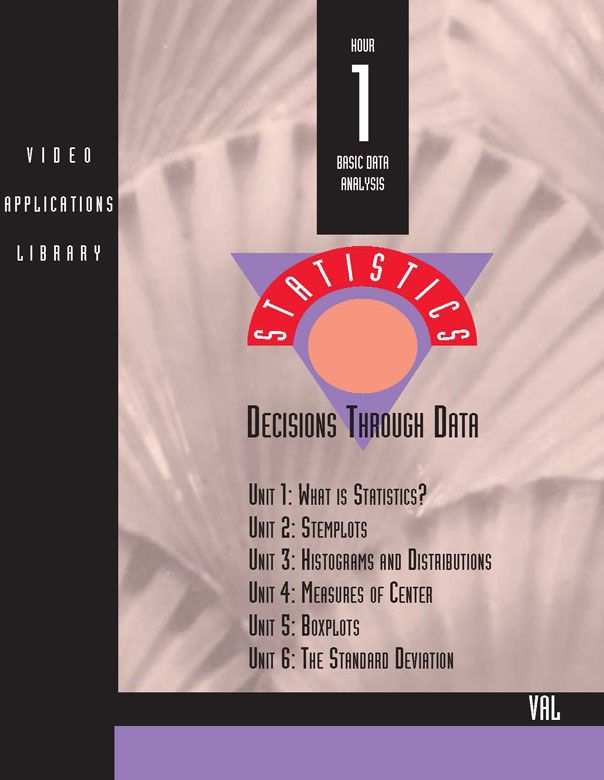Statistics: Decisions Through Data: Unit 1 What Is Statistics
Author: COMAP, Text by David S. Moore
Statistics: Decisions Through Data is an introductory statistics course that unravels the statistical arguments behind surveys, polls, experiments, and product claims. Each episode begins with a documentary segment that engages students' interest, and then teaches skills to gather data, analyze patterns, and draw conclusions about real-world issues.
Unit 1: What is Statistics? (12:23)
Summary of the Video
The video opens with a montage of images with statistical questions; most of these will appear later in the series. The space shuttle Challenger explosion; monitoring of pollution on Chesapeake Bay; prevention of heart attacks using aspirin; political polls. Then a puzzle graphic introduces the idea that statistics is a way of solving puzzles using data, and that statistics can be divided into three main areas: describing data, producing data, and drawing conclusions from data.
Then brief stories illustrating each aspect of statistics are presented. First, analyzing data. Raul Lopez describes his studies of lightning. Statistical methods of organizing the data showed striking patterns. Sarah seemed to grow slowly after age 2. Graphs of her pattern of growth helped diagnose growth hormone deficiency and led to successful treatment. Florida manatees are often injured or killed by power boats. Statistical investigation of the relation between the number of boats registered and the number of manatees killed shows a strong connection.
Second, producing data. Environmental studies are shown in progress in Chesapeake Bay, sampling water and bottom mud in a statistically designed program of data collection. Then we explore a medical experiment that compared the effect of aspirin with a placebo and found that aspirin reduces the rate of heart attacks in middle-aged men. The final illustration presents polls of public opinion, both political polls and the polls conducted by academic researchers studying public attitudes and how they have changed over the years.
Finally, conclusions from data. We get a look at an historic lawsuit in which Hispanic agents took on the FBI and won. Both sides presented data to back their claims. Then, we visit Kodak’s battery plant to see how batteries are tested to produce data that permit specific claims about their lifetime in service. Then to Baltimore, where an experiment compared welfare systems and concluded that a new system did better in helping welfare mothers to move into the work force.
Video support materials are available as part of COMAP full membership. Each video is accompanied by instructor’s notes, student exercises, group activities and quizzes.

Mathematics Topics:
Application Areas:
Prerequisites:
You must have a Full Membership to download this resource.
If you're already a member, login here.